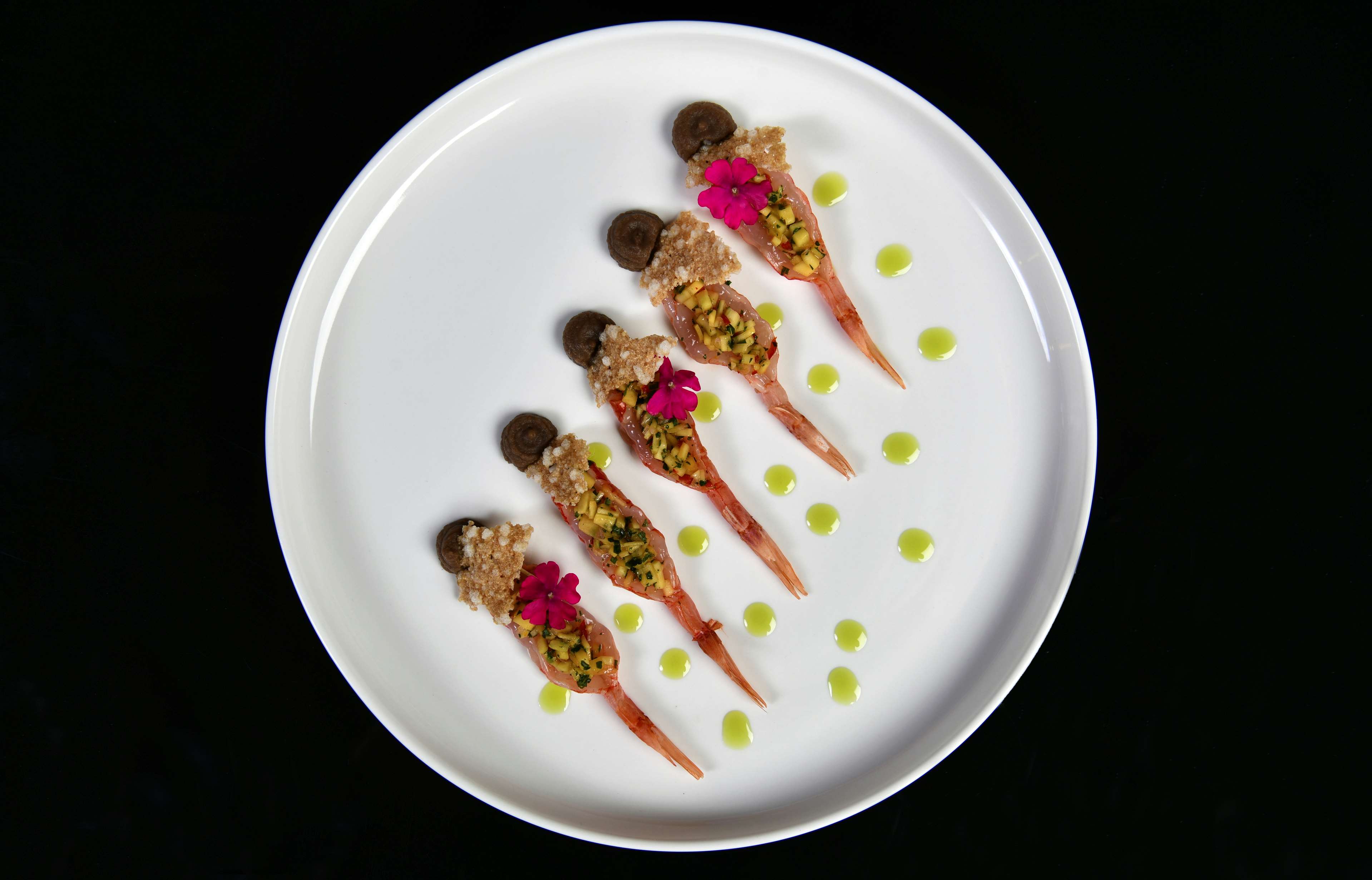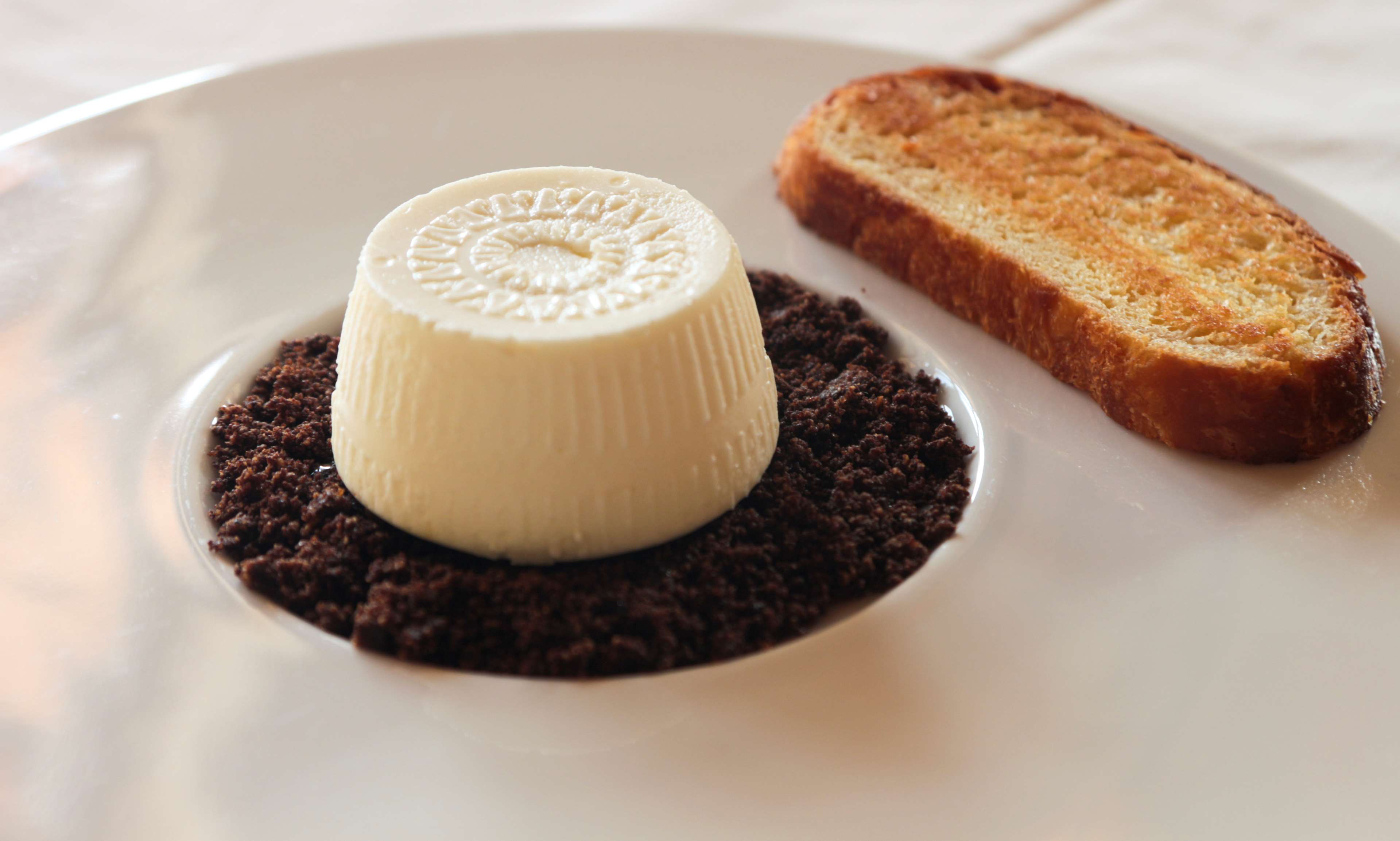
News from Gozo
Our Story, Told Through Food

Served meets Trevor Portelli, the Culinary Director at L-Istorja Restaurant,
Kempinski Hotel San Lawrenz
--> See the full magazine here.
The Kempinski hotel's recently reopened restaurant prides itself in their efforts to retell our country's story, to tourists and locals alike, through a holistic dining experience.
As culinary director Trevor Portelli implies, the cuisine at L-Istorja encompasses the many cultural influencers that have left their mark on the Maltese islands through the introductions of certain ingredients, to the combination of flavours and creation of recipes. But the story is told on and off the plate, with relics of recipes past adorning the restaurant walls, for diners to read and perhaps learn something new about what our people used to eat in past times. Chef Trevor and his team, work to frequently adapt the menu to the seasons and availability of certain local produce, and as a result a number of dishes change daily, such as the amuse bouche, the pasta and fish of the day.
This allows for the chefs to showcase their creativity, talent, the bounty of fresh ingredients these islands produce, as well as to keep the menu exciting for the hotel's long staying guests. From our conversation with Chef Trevor, we quiz him to understand exactly how he and his team achieve just that.
What were the main culinary influences for the concept of L-Istorja?
The purpose and concept of L-Istoria is to represent our culinary history, as Italians, French, Spanish, Arabs and the British have all left an influence on the Maltese islands and we wanted to honour our own roots.
There were some traditional recipes (like those hanging on your walls) that don't feature on the menu because they are no longer relevant or suited to the modern diner's palate. Was there anything you would have liked to replicate but felt it would not have been appreciated?
Actually, Heritage Malta discovered a dish and managed to reconstruct parts of the recipe, and when I heard about it, the story behind it really made an impact on me. The age of the recipe presents a challenge in making it attractive for the modern palates of our guests, but we love it when we get to use our creativity for this type of work. We are currently trying to implement this dish into a future menu by testing out different approaches and cooking techniques.
While the Maltese Fira has been awarded with a placement on "UNESCO Intangible Cultural Heritage" list, Gozitan Fira on the other hand is internationally seen as 'Maltese Pizza'. There are so many influences I could name; for example how the Phoenicians gave us the cultivation of vines and olives and creation of wine and olive oil, and the Maltese rabbit stew. In my opinion we have lost track of our real cuisine over the years, but I'm happy to see an increase in interest among young Maltese chefs to bring our rich and tasty cuisine back where it belongs.
What are the fundamental elements that make up part of our local cuisine?
An important element of our local cuisine is the use of local ingredients and produce, which is part of the reason why this is so important for us as well. When we are creating new menus we have a high focus on this - and the more local the better. We have a garden in the hotel where we grow herbs and vegetables, and these are always our first options. From there on, we use ingredients from Gozo, and sometimes Malta as well. We are always using seasonal ingredients, and I can proudly say that Malta and Gozo have incredible farmers and fishermen that supply our kitchens with top-quality food.
What traditional foods or cooking methods have you incorporated into your Summer menu
The first dish that comes to mind is also our signature dish - the 'Caramelle'. The filling is made with our traditional Maltese rabbit stew, and we cook this exactly the way the older generations used to cook it.
How would you describe the overall dining experience that you're trying to create for the guests at your restaurant?
Our vision is to bring awareness to the rich, culinary history of Gozo and Malta. Maltese cuisine is often seen as a version of fast-food but in L-Istorja we have proven that with passion and creativity, our local cuisine can be prepared and served in an upscale dining experience. From our guests, we hear that this is what attracts them the most - the opportunity to eat local food in a gourmet restaurant.
Sourcing quality ingredients is an important starting point to a great dish. How do you go about sourcing your ingredients for your dishes?
Before creating the menu, I always touch base with our farmers and suppliers on which ingredients we will have available in this particular season. It is after doing this that we can start creating our dishes according to the seasonality.
Given that your concept and name even implies a certain respect for traditional cuisine, how do you find the balance between tradition and innovation when coming up with new dishes or a new menu altogether?
This area challenges us to put our creativity and innovation to the test. We are always working to keep the dishes within the concept of L-Istorja, while also adapting the recipes of old, to the modern palate of our guests. The daily fish and soup options help us develop more interesting dishes for our guests while navigating this balance between innovation and tradition.
A good example of this, and an absolute favourite amongst our guests is our sweet version of Gozo Gbejna. As Maltese people will be well aware, Gbejna is traditionally served as a savoury starter but our dedication to tradition and innovation has proven particularly beneficial in this case.
A hidden home-made pear jam bursts from within the 'Gbejna' and slowly floods a bed of carob "soil", creating a unique blend of flavours and texture, further enhanced by the crunch of pistachios and sweet Mediterranean lemon infused oil. This is a dish that takes all newcomers by surprise, and that our returning guests order for a second time. Further to this, as in Malta we have cuttlefish all year round we decided to create a dish of Cuttflefish "tagliatelle'. Yet while this may be in the pasta section of the menu, it does not contain any pasta, as the tagliatelle itself is made from the cuttlefish meat. Lemons and potatoes are harvested from our own vegetable garden as well as other locations on Gozo.

